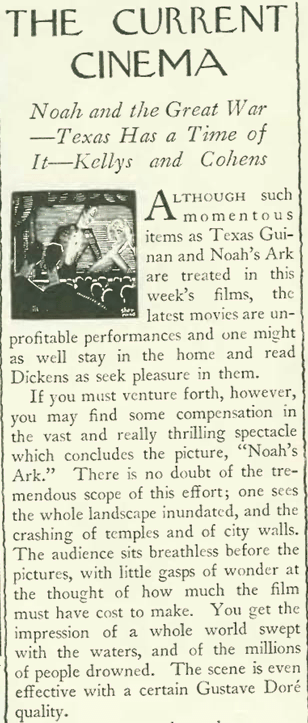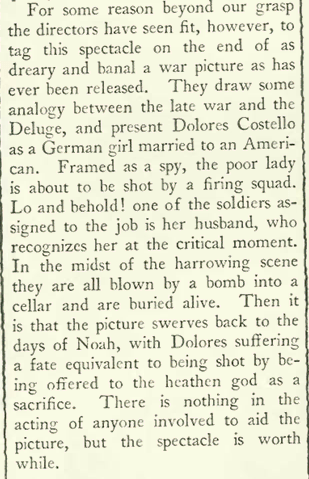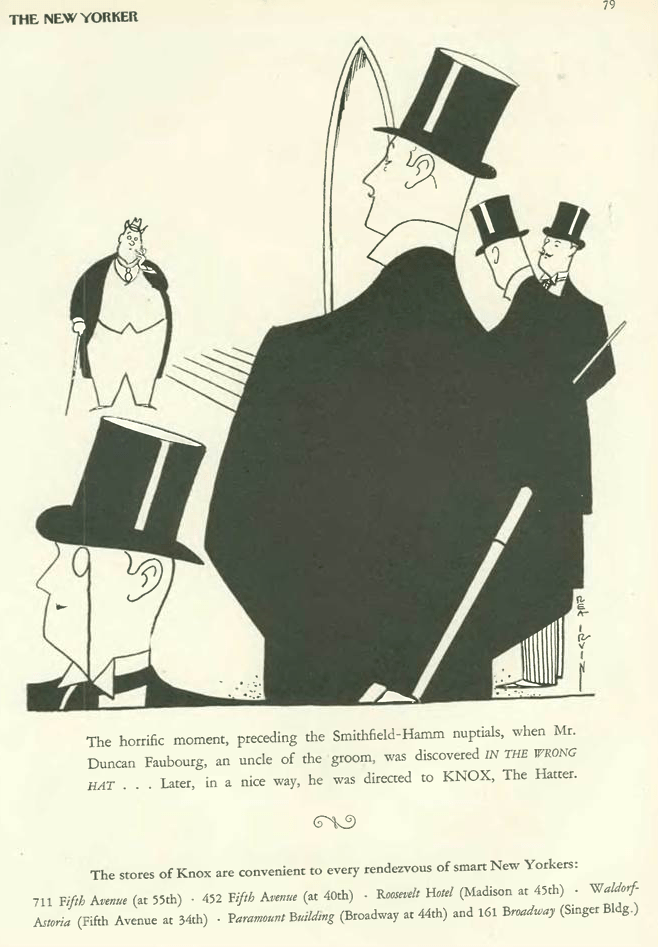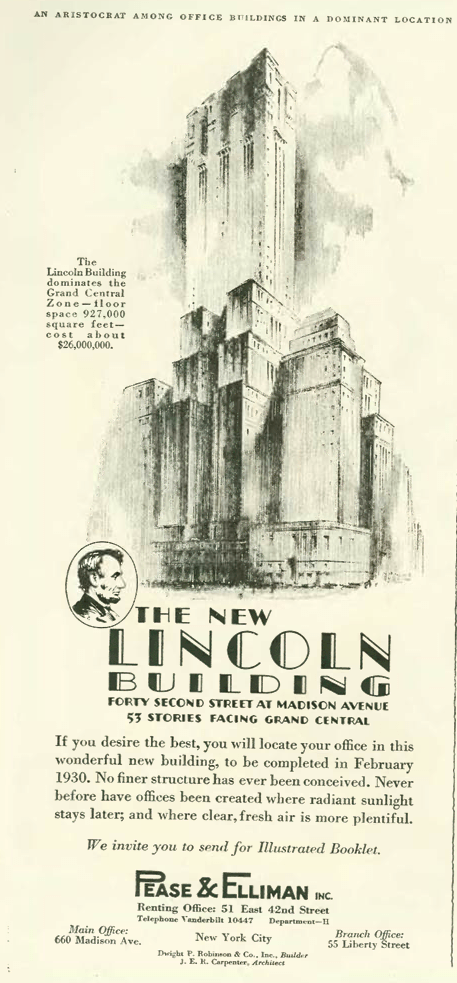In the Roaring Twenties, Mary Louise Cecilia—aka Texas Guinan—was the undisputed queen of New York’s boozy, bawdy nightclub and speakeasy scene.

During the 1920s Guinan operated one of New York’s most famed speakeasies, The El Fey Club, which attracted the likes of Mayor Jimmy Walker, actors George Raft and Peggy Hopkins Joyce, writers including Ring Larder and Damon Runyon, and gossip columnists Walter Winchell, Mark Hellinger, and Ed Sullivan (yep, the same Ed who later hosted TV’s most famous variety show).
It was still months before the big stock market crash, but in the pages of the New Yorker you could already sense a change in its voice; it was maturing, to be sure, but it also seemed to be growing weary of the party. The magazine’s nightlife correspondent, Lois Long, contributed sporadically to her once-lively “Tables for Two” column (she was now a mother, and would abandon the column altogether in 1930). As for the queen of nightlife, Texas Guinan, New Yorkers were ready for something different.

In a review of her latest movie, Queen of the Night Clubs, the New Yorker found that Guinan lacked her famed charm and vitality, and that the camera was “not kind to her looks.”

The film in many ways marked the end of Texas Guinan, not so much because it was a bad film but because she had simply run her course and was going out of style. The market crash later that year was the final straw. She took her show on the road, made an unsuccessful attempt at a European tour, then returned to the States. She made one final film, Broadway Thru A Keyhole, which was based on a story by Guinan acolyte Walter Winchell. Guinan died on Nov. 5, 1933, three days after the film’s release; her death was due to ulcerative colitis brought on by a case of amoebic dysentery contracted during a visit to Chicago. She was 49. One month later, Prohibition would be repealed.
A final note: Queen of the Night Clubs would be Texas Guinan’s final starring role (the film is considered lost), but before she became a night club fixture she was a popular star in dozens of shorts and two-reelers—with mostly Western themes— from 1917 to 1921.

* * *
A Film of Biblical Proportions
The New Yorker’s May 23 film review also sized up the latest epic to come out of Hollywood—Noah’s Ark—a picture with parallel storylines known mostly for its innovations in special effects.
The film premiered in late 1928 as a silent and was re-released in 1929 as a “part-talkie.” It told the story of Noah and the Great Flood, connected to another story featuring cabaret singers, soldiers and espionage during the First World War. Here is the New Yorker’s take on the film:

The New Yorker concluded that the film was worth seeing for the Noah story’s special effects, despite its attachment to a “dreary and banal” war picture.


Notable about these silent epics is the lack of precaution they took with both the actors and the extras. A huge amount of water—600,000 gallons—was used to film the the climactic flood scene. Three extras drowned and many others suffered broken bones and other serious injuries. One extra had to have his leg amputated. As for the stars, Dolores Costello caught a severe case of pneumonia during the filming.
Here’s a clip to give you an idea of what the extras had to deal with:
Some trivia: John Wayne was an extra in the film, and also worked in the prop department. The director of Noah’s Ark, Michael Curtiz, would go on to direct some of the most well-known films of the 20th century, including The Adventures of Robin Hood with Errol Flynn, Angels with Dirty Faces with James Cagney and Humphrey Bogart, Casablanca with Bogart and Ingrid Bergman, Mildred Pierce with Joan Crawford, and White Christmas with Bing Crosby and Rosemary Clooney. He would also direct an Elvis Presley movie, King Creole, and in his final film would reunite with John Wayne in 1961’s The Comancheros.
* * *
While Americans were enjoying epic filmmaking, Russian audiences were being served up the latest in propaganda, although this was propaganda presented with stunning film innovations and avant-garde sequences. In this item from the March 23 “Talk of the Town” the film is referred to as Through Russia With A Camera, but today it is known as Man with a Movie Camera. This experimental silent film from 1929 supposedly documented ordinary life in Soviet Union (with no signs of the famine that claimed 5 million Soviet citizens in the early 1920s). Directed by Dziga Vertov, the documentary’s famed cinematography was by Mikhail Kaufman. “Talk” observed:


* * *
From Our Advertisers
A sampling of advertisements from the pages of the March 23 issue include this nearly two-page spread for Pond’s cold cream…no doubt Pond’s was thrilled with this endorsement by “Mrs. Cornelius Vanderbilt Jr,” otherwise known as Mary Weir of Davenport, Iowa. Mary was wife No. 2 of Cornelius Vanderbilt’s seven wives. Mary and Cornelius were married in 1928 and divorced in 1931…
…and then we have this advertisement from Knox hatters, illustrated by the New Yorker’s own Rea Irvin…
…this advertisement for the new Lincoln Building played up the building’s dominating form on Madison Avenue…
…a dominance that continues to this day. I know it’s not cool to gaze up at buildings in Manhattan, but if you’re ever in the neighborhood you must look upward at least once and gaze at the canyon that splits the Lincoln Building’s massive facade…

…this Remington typewriter was the closest thing to a desktop computer in 1929…I own one of these and I must attest that it isn’t exactly noiseless…
…this next ad caught my eye because it encouraged people to commit negligent homicide by throwing their product out of a high-rise window…it is also interesting because today Crosley is still a big name in radios and record players, although today’s Crosley is similar in name only. The original Crosley Corporation was a major player in early radio broadcasting, and in addition to manufacturing radios Crosley would go on to build refrigerators, a line of inexpensive subcompact cars and trucks (from 1939 to ’52) cars, and even small airplanes (1929-’36). Crosley ceased as a brand name in 1956, but the name was revived in 1984 by Modern Marketing Concepts. Today Crosley is a leading manufacturer of vintage-styled turntables, radios and other electronics…
…speaking of encouraging ridiculous behavior, some clever marketer at Ronson lighters found a great way not only to sell lighters, but also to encourage customers to waste lots of lighter fluid…
…and then we have this, one of the unlikeliest advertisements ever to appear in the New Yorker—at first I thought it was one of E.B. White’s fake newspapers, but it was actually a two-page spread promoting Davey Tree Surgeons of all things…
…just for fun I am tossing in this illustration by Constantin Aladjalov that appeared along the bottom of a two-page spread…
…and finally, our cartoon from Otto Soglow, in which our subject is either referring to a popular board game from 1929, or a particular sequence in a domino game…
Next Time: While You Were Away…
















